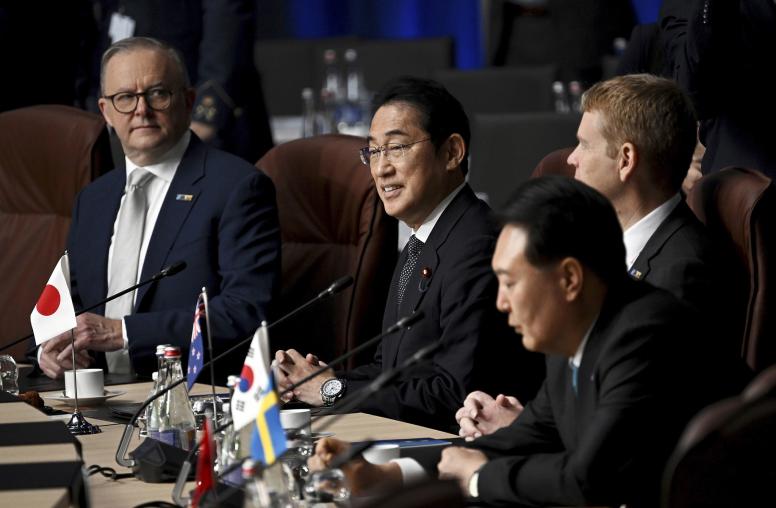Seizing the Moment: Media & Peacebuilding
Held at the magnificent Newseum in Washington, D.C., this summit considered specific recommendations on ways to harness the power of media for conflict prevention. Senior media makers, policymakers and powerful change agents who are key to the development of new ideas with the potential to reduce future conflict, convened at this summit.
The United States Institute of Peace and the Independent Television Service (ITVS), in collaboration with Sesame Workshop and citizen journalists around the world, held a leadership summit on May 12, 2010 at the magnificent Newseum in Washington, D.C.
This summit considered specific recommendations on ways to harness the power of media for conflict prevention. The hosts convened senior media makers, policymakers and powerful change agents who are key to the development of new ideas with the potential to reduce future conflict.
Speakers
- Jamie Tarabay, Moderator
Correspondent, National Public Radio - Jared Cohen
Member of the Secretary of State's Policy Planning Staff, U.S. Department of State - Patricia Harrison
President and CEO, Corporation for Public Broadcasting - Marvin Kalb
Veteran Broadcaster and Visiting Expert, USIP - Riz Khan
Senior News Anchor, Al Jazeera English - Gary Knell
President and CEO, Sesame Workshop - Rebecca MacKinnon
Co-Founder, Global Voices - Mir Ibrahim Rahman
CEO, Geo TV Pakistan - Frank Sesno
Director, School of Media and Public Affairs
Welcome and Framing the Day (9:00am - 9:30am)
- Sheldon Himelfarb
Associate Vice President, Center of Innovation for Media, Conflict, and Peacebuilding
U.S. Institute of Peace
Hosts Remarks
- Ambassador Richard Solomon
President, U.S. Institute of Peace
Watch a video of Richard Solomon's remarks - Sally Jo Fifer
President and Chief Executive Officer, Independent Television Service
Watch a video of Sally Jo Fifer's remarks
Panel 1: The New News: Media at the Crossroads (9:30am - 11:00am)
Nowhere is the media landscape changing more dramatically than in the news business. Newspapers and foreign news bureaus are dwindling, while other information sources are exploding with the rise of the Internet, the citizen journalist, and social networking. Can the morphing of traditional journalism into social networking journalism be directed toward problem-solving on a grander scale than ever before and improve global conflict prevention? Or are we on a path to a more polarized society, the result of the continuing information balkanization that comes with thousands of online and offline news sources and the disappearance of “mainstream media." This panel discussed and considered recommendations designed to leverage the new news business for improved global conflict prevention.
Media Presentation:
Select clips from the 2010 Academy® Award nominee for best documentary feature, The Most Dangerous Man in America: Daniel Ellsberg and the Pentagon Papers (1971) takes an honest look at Dr. Daniel Ellsberg, a top war planner, who leaked top-secret documents to The New York Times that led to what many consider the toppling of President Nixon and the end of the Vietnam War.
Panel 2: Storytelling 2.0: Keeping it Real, Opening Minds, and Changing Hearts (11:15 a.m. – 12:45 p.m.)
There’s no doubt that stories can make a difference—whether it’s a radio drama for girls' education in Afghanistan, a TV soccer soap opera in Kenya sparking cross-ethnic dialogue, or a documentary like An Inconvenient Truth pushing climate change to the fore. But what about those who use the power of story to recruit extremists and promote violence? This panel considered how best to amplify the potential of documentary and narrative film to help bridge inter-group conflicts , and looked at innovative new models for supporting storytelling that produce positive social change.
Media Presentation:
Project Kashmir: The story of two young American women, one Muslim and the other Hindu, who together sneak their cameras into Kashmir, where conflicting faiths mean war. Their mission: find out what makes their peers choose homeland over preserving their own lives. Project Kashmir tests the limits of friendship and costs of war in one of the most dangerous and beautiful places on earth.
Panel 3: Next Generation Peacebuilders (1:30 p.m. - 3:15 p.m.)
With a recent survey from the Kaiser Family Foundation finding that American children are exposed to almost 11 hours of multimedia per day—and parallel trends emerging abroad—the future of media and intergroup relations are increasingly intertwined. High media exposure can correlate to bad grades, just as watching violent images can lead to violent behavior. This panel explored recommendations for deepening our commitment to developing next generation peacebuilders when digital media platforms are driving skyrocketing media consumption among youth globally.
Media Presentation: TBD
Closing Remarks (3:15 p.m. – 3:30 p.m.)
The summit also had the active participation of other experts as part of the audience, and included international voices via webcast, live blogging, and online chat.
The following organizations provided demos throughout the day. We are thankful for their participation.
- Broadcasting Board of Governors
- Games For Change
- LinkTV
- Soliya
- USIP's Open Simulation Platform
- USIP's SENSE Program
- York Zimmerman Inc. & The International Center on Nonviolent Conflict
Special thanks also to our online partners: Digital Democracy, Mazahery Legal, Meedan.net, Peace and Collaborative Development Network, UW Project on IT & Political Islam, The World Bank, and citizen journalists from around the world.



